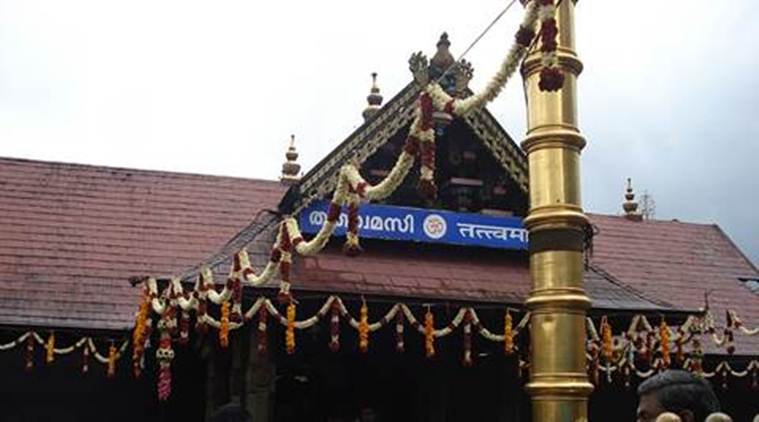 The next hearing in the case will be held on July 24
The next hearing in the case will be held on July 24
The CPM-controlled Travancore Devasom Board which administers the Sabarimala Temple in Kerala on Thursday contradicted the stand of the CPM-led state government that age restrictions on entry of women to the temple should be lifted.
Appearing for the board, senior advocate Abhishek Sighvi told a five-judge Constitution bench that there were thousands of temples dedicated to Lord Ayyappa but the restriction was only in Sabarimala and this was in view of the special nature of the installation “which is supposed to depict “naishtika brahmacharya” (perennial brahmacharya)”.
The bench is headed by Chief Justice of India Dipak Misra and comprises Justices A M Khanwilkar, R F Nariman, D Y Chandrachud and Indu Malhotra.
He explained that the pilgrimage to the hill shrine follows a 41-day rigorous ‘vrat’ (penance) period during which the pilgrims prepare themselves for the climb through dense forests. The shrine is located deep inside forests in the Western Ghats.
Singhvi refuted that the age restrictions amounted to gender-based discrimination and submitted that women below the age of 10 and above 50 are permitted entry. “Females of reproductive age are not permitted,” he said, adding, “even in their case, no absolute prohibition exists, as each one of them, when she crosses the age of 50, would be entitled to enter the temple.”
The hearing also witnessed sharp exchanges with senior advocate K Parasharan telling the bench that it should not try to “change the character” of the deity and the CJI observing that the 41-day penance was “imposed” to make it “impossible” for women to visit the shrine.
“If you are saying the deity is not a naishtika brahmachari, you are changing its character. You cannot change the character of God,” Parasaran, appearing for the Nair Service Society, representing the Hindu Nair community, told the CJI when prodded for a philosophical explanation to the scenario.
CJI Misra countered, “You are imposing it. You put 41-days so that a woman can’t go. It is imposition of an impossible condition…What you can’t do in law, you do it indirectly.”
Amicus Curiae Raju Ramachandran had earlier equated age restrictions on women entry to the temple to untouchability.
Countering the argument, Singhvi said the temple which predates the Constitution does not make any discrimination based on caste or religion. “It allowed entry to all people long before untouchability was outlawed by law,” he said.
Justice D Y Chandrachud, however, did not seem to agree and observed there was “no rational relation to the object sought to be achieved”.
Justice Indu Malhotra questioned a petitioner counsel on the claim that the customs in Sabarimala amounted to gender discrimination. “There is a temple in Kerala which does not allow entry for men. What about that?” she said.
Some of the lawyers defending the temple norm pointed out that the shrine she was pointing to was called Ladies Sabarimala and had entered the Guinness Book of World Records for the largest attendance of women. The petitioner’s counsel replied that even that (not allowing men) was discrimination.
Justice Malhotra continued, “There are several private temples which have their own rules. What about that?”. The counsel replied that who was funding was not the issue and everyone should be allowed entry.
At another point, Justice Malhotra asked, “Aren’t there similar beliefs in other religions also? I believe it was there in the Old Testament also?” Singhvi replied that such practices were there in all cultures and religions.
The arguments remained incomplete and will continue on July 24.